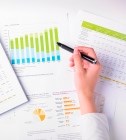The Covid-19 crisis has made life increasingly challenging for the equity income investor as a large number of companies have announced plans to cut or postpone dividends against a backdrop of reduced revenues.
As such, investors might wish to look at alternative investment options to help them meet their yield income targets.
Solar power
One alternative investment that investors might wish to consider is solar energy, an infrastructure asset that Liam Thomas – chief investment officer at US Solar Fund – said, “can provide steady income due to long-term cashflows generated by providing essential services”.
Infrastructure assets include everything from bridges to transportation systems and water to communication networks, and demand for these assets means they’re much less sensitive to economic cycles according to Thomas “and can outperform equities in a downturn”.
“Infrastructure investments also benefit from low interest rates because most projects use debt alongside equity to finance the building or operation of assets,” he added.
Largescale solar projects such as those the US Solar Fund invests in gives investors access to long-term cashflows, particularly in the US where these schemes are more common.
In the US, the utility-scale solar plants have long-term power purchase agreements of about 10-25 years with investment-grade energy purchasers, which guarantee energy at a fixed price. “Contracted solar assets can [therefore] offer lower risk than equities, which offer similar yield, or higher return compared with fixed income products with a similar risk profile,” said Thomas. In addition, solar power is well positioned in the more volatile market conditions given the increased global focus on reducing carbon emissions. 
“Renewables are expected to increase market share at significant rates in the coming years, already outpacing fossil fuels in terms of new-build generation,” added Thomas (pictured). “As the prices of photovoltaic panels and components continue to fall, solar becomes more competitive than other sources of new-build generation in many geographies.”
Operational energy storage
Another alternative infrastructure asset that investors might like to consider – and one that also plays into the renewable energy theme – is operational energy storage, according to Gresham House Asset Management’s managing director Rupert Robinson.
“Investing in operational energy storage is designed to offer investors a complementary route to renewable energy in facilitating the migration to a low-carbon economy, while hoping to deliver a higher yield than more established opportunities,” said Robinson.
One of the major avenues for accessing these assets is through a ‘yieldco’: an investment company formed to own operating assets that produce a predictable cash flow, usually via long term contracts.
These investment company collaborations offer exposure to renewables and have proved very popular with investors, according to Robinson, as the projects are perceived to have low-risk revenues, underpinned by subsidies and contracted for long periods.
But there are risks to them Robinson added, since “energy storage projects offer no subsidy and a relatively low level of contracted revenue”.
This, however, is countered by increasing demand for intermittent renewable energy and the need for storage to facilitate flexible generation and with batteries one of the oldest and most trusted technologies demand is likely to grow in the future.
“Energy storage systems provide a target dividend yield of 7 per cent per annum,” explained Robinson. “In addition, they offer the potential for capital growth, as discount rates applied to valuing these assets are expected to fall from 12 per cent to closer to 6 per cent over the next few years – equivalent to where solar and wind is today.”.
Secured loans
Finally, secured loans – sub-investment grade senior secured corporate loans – could be another alternative asset class worthy of consideration by investors looking for yield.
Joe Lynch, manager of the NB Global Floating Rate Income fund – said secured loans offer higher yields than other fixed income alternatives.
“Yields in the loan market have increased as prices have fallen, but we believe these valuations are pricing in a rather severe scenario,” said Lynch. “In the past five out of six episodes since 2000 where the loan market saw distressed levels, the implied market default rate exceeded the actual default rate.
“While we expect default rates to increase towards 5-7 per cent, we believe what is implied in current valuations likely far exceed actual default rates.”
He added: “In fact, once the ‘mandated’ economic halt is reversed, we expect credit to recover ahead of other assets. Following the 2008 financial crisis, loans got back to par in mid-2009, whereas the FTSE did not recover value until mid-2013.”





